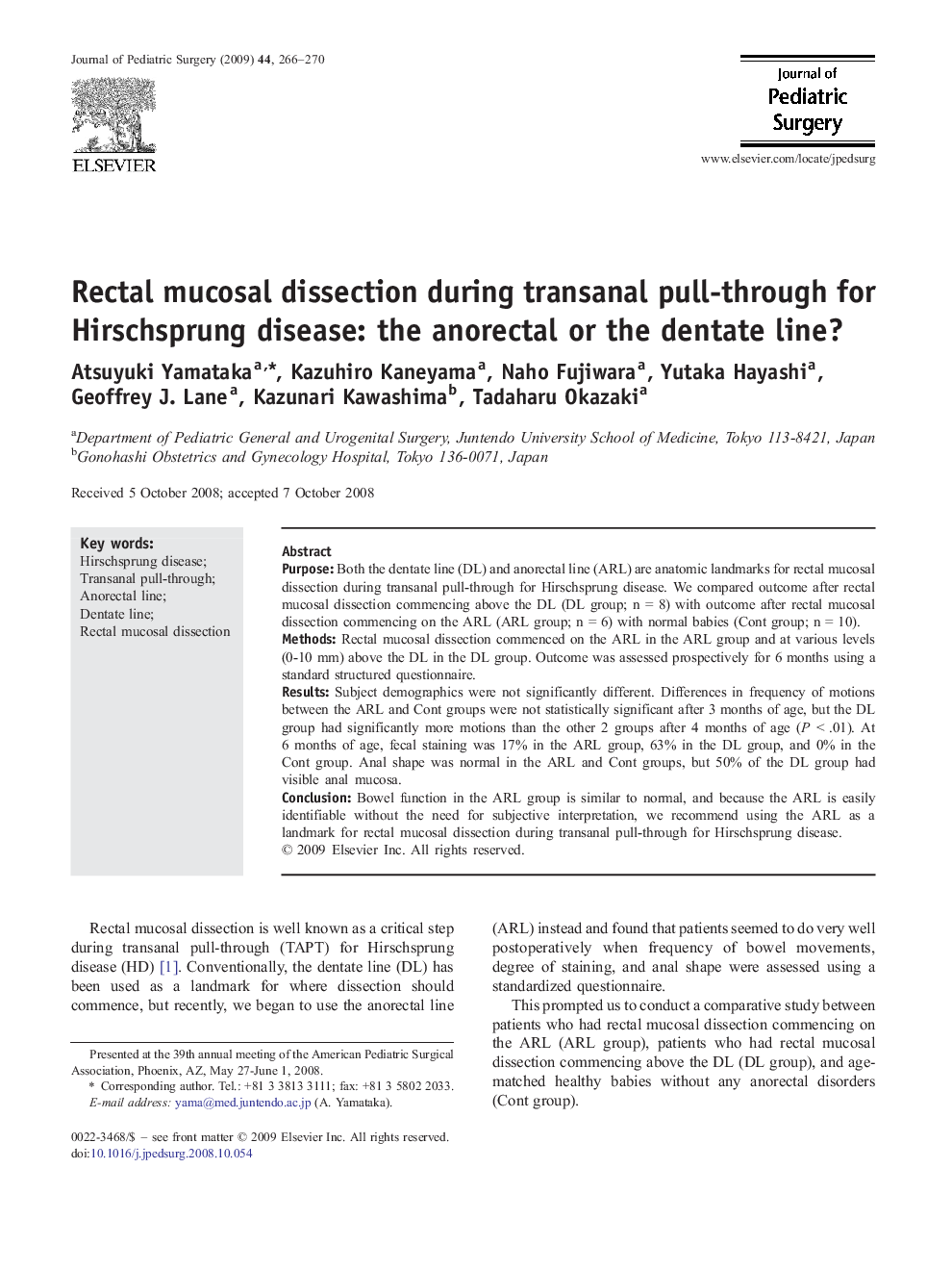| Article ID | Journal | Published Year | Pages | File Type |
|---|---|---|---|---|
| 4159749 | Journal of Pediatric Surgery | 2009 | 5 Pages |
PurposeBoth the dentate line (DL) and anorectal line (ARL) are anatomic landmarks for rectal mucosal dissection during transanal pull-through for Hirschsprung disease. We compared outcome after rectal mucosal dissection commencing above the DL (DL group; n = 8) with outcome after rectal mucosal dissection commencing on the ARL (ARL group; n = 6) with normal babies (Cont group; n = 10).MethodsRectal mucosal dissection commenced on the ARL in the ARL group and at various levels (0-10 mm) above the DL in the DL group. Outcome was assessed prospectively for 6 months using a standard structured questionnaire.ResultsSubject demographics were not significantly different. Differences in frequency of motions between the ARL and Cont groups were not statistically significant after 3 months of age, but the DL group had significantly more motions than the other 2 groups after 4 months of age (P < .01). At 6 months of age, fecal staining was 17% in the ARL group, 63% in the DL group, and 0% in the Cont group. Anal shape was normal in the ARL and Cont groups, but 50% of the DL group had visible anal mucosa.ConclusionBowel function in the ARL group is similar to normal, and because the ARL is easily identifiable without the need for subjective interpretation, we recommend using the ARL as a landmark for rectal mucosal dissection during transanal pull-through for Hirschsprung disease.
